- News
- Reviews
- Bikes
- Accessories
- Accessories - misc
- Computer mounts
- Bags
- Bar ends
- Bike bags & cases
- Bottle cages
- Bottles
- Cameras
- Car racks
- Child seats
- Computers
- Glasses
- GPS units
- Helmets
- Lights - front
- Lights - rear
- Lights - sets
- Locks
- Mirrors
- Mudguards
- Racks
- Pumps & CO2 inflators
- Puncture kits
- Reflectives
- Smart watches
- Stands and racks
- Trailers
- Clothing
- Components
- Bar tape & grips
- Bottom brackets
- Brake & gear cables
- Brake & STI levers
- Brake pads & spares
- Brakes
- Cassettes & freewheels
- Chains
- Chainsets & chainrings
- Derailleurs - front
- Derailleurs - rear
- Forks
- Gear levers & shifters
- Groupsets
- Handlebars & extensions
- Headsets
- Hubs
- Inner tubes
- Pedals
- Quick releases & skewers
- Saddles
- Seatposts
- Stems
- Wheels
- Tyres
- Health, fitness and nutrition
- Tools and workshop
- Miscellaneous
- Tubeless valves
- Buyers Guides
- Features
- Forum
- Recommends
- Podcast
feature
 Achy back on the bike? July 2024
Achy back on the bike? July 2024Achy back on the bike? The causes of back pain in cyclists and the best ways to relieve and prevent it
Shuffling about in the saddle trying to get comfortable, or standing up repeatedly to stretch out an aching back – we've likely all been there at one point or another, because unfortunately, back pain is a common complaint amongst cyclists. Understanding the root cause of back pain can be quite complex, so we've spoken to expert bike fitters and physios and scoured some of the latest research to find you the best tips for preventing and treating back pain.
What causes back pain?
If you do a Google search for back pain, you're likely going to find several causes and remedies for treating it. From speaking with experts, it's evident that back pain can arise from a whole host of places in the body, and your lifestyle can have a huge impact on its development -- and as such, it is also one of the most common things bike fitters and physios address.
Bryan McCullough, a bike fitter and physiotherapist at The Bike The Body, says: "In short, yes, the most common complaints for cyclists with pain are lower back pain and knee pain.
"While theories have been put forward around prolonged flexion position being the driving factor we do not have conclusive evidence on this as things stand. It should be considered multifactorial, i.e. lots of factors can contribute."
You might think that back pain comes from sitting in the wrong way, or as a result of a specific activity, such as lifting heavy things or straining it during exercise. These are all potential causes for the pain, but according to cycling and triathlon specialist physiotherapist Nichola Roberts, it can be hard to pinpoint the exact cause of back pain.
"When you look at what causes back pain, there are lots of structures in the back that can cause pain... they have nerve endings that can [also] give you pain. Those could be muscles, discs, intervertebral joints; it can be sacroiliac joints, or it could be just muscle spasms from the muscles crossing the joints. So, it can be very difficult to pinpoint exactly what is creating the pain and what is the pathology.
"Certainly even if you have an MRI, it might show there's a disc bulge and you could point your finger at that. But actually, lots of people in the general population have disc bulges but they don't have back pain. We can make generalisations from what people complain of and how the injury came about but it's very difficult to actually pinpoint exactly one cause."
How can cycling back pain be treated?
With the convoluted causes of back pain, what can you do to stop your back pain from getting worse and treat it if it already aches? Looking at how your bike fits you and your riding position is a good first step.
Because back pain can be connected to so many things in the body, it might be difficult to isolate the cause at home, and at the same time, even small adjustments can make a significant difference in comfort and performance.
There are a lot of other things you can do, though, from assessing your training load and fatigue levels in connection to the pain, and making sure you spend time strengthening and conditioning your body off the bike.
Make sure you have a good bike fit
"I would suggest that bike set up (or bike fit) is one of the more common contributors to developing low back pain, alongside increasing riding distance, duration, elevation, or intensity too quickly for the body to be able to adapt. Also, lots of long endurance riding without any form of off-bike strength or core training can also increase the chances of developing low back pain," McCullough says.
> The things I learnt from a professional bike fit
Julian Wall, a bike fitter at London-based CycleFit bike fit studio, echoes McCullough in saying that bike fit is not to be overlooked when finding the cause of back pain. Both fitters list the most common bike fit issues to be a saddle that is too high (resulting in restricted hip range of motion), a leg length discrepancy and cranks that are too long as some of the most common causes for back pain.
Wall says: "The trend for shorter cranks, which we've been advocating for many years, is to reduce the movement, the up and down movement when pedalling, especially for smaller riders.
"The shorter the crank, the less up and down vertical movement will reduce our movement in the lower back. And that can help alleviate pain. It can be so for stiff riders or mobile riders, any reduction in movement is better."
What Wall says there is one of the most important takeaways if you want to be pain-free. The less movement, the better.
Of course, you can start at home by checking whether the bike you ride generally fits you. Wall suggests working your way up from the feet, looking at foot control, saddle height and crank length. From here, the next steps are to look at posture and strength distribution, something you'll likely need devices such as a camera and power meter to help you with.
By using online bike fit resources and filming yourself on the bike, you can probably identify the most evident misalignments you might have in your setup; but if changing your saddle height, perfecting the handlebar position and changing your crank length doesn't still make you feel stable on the saddle, then it's time to see a professional.
A specialist bike fitter can assess your riding position and the fit of your bike easily, without you having to invest hundreds of pounds on changing parts on your bike without knowing if any of it will alleviate your aching back. Your whole body is working as one, and as we've detailed above, back pain can be connected to a host of things. This means that even a small thing such as foot pronation or tensing up your arms can radiate through the body, and somehow, result in back pain.
Wall explains: "In an ideal world and a bike fit, you want quite a nice stable pelvis with a little bit of movement as the hips move, and then the rest of the movement being absorbed with the upper body. If you are locking out your elbows and being very fixed in the way that you ride, then that movement has to go somewhere else. So again, we're getting too much moving at the pelvis.
"For instance, if you pronate heavily on one side, you would weigh around to that side effectively. So then your body will be trying to work into that symmetrical machine and I can see rider's spines literally twisting, as they're riding."
Roberts also adds to this that especially for women, saddle comfort can also cause changes in the riding posture and lead them to roll off the saddle backwards to try and give themselves more comfort without realising they're doing it. This then affects the reach, but it's quite hard to self-diagnose at home or on a ride.
The above are just a few examples of how a poorly fitting bike and components can result in a poor posture, such as a rounded back or excessive lower back flexion, both of which can then contribute to discomfort in the back – especially over longer rides and with increased training loads.
Assess your training load
From trawling through research and speaking with bike fitters and physios, one factor contributing to back pain that kept popping up was the riding position. But even if you have a near-perfect position, there are other factors that can contribute to aches. A lot of the research on back pain in cyclists highlights the impact of fatigue.
"In most cases of lower back pain in cyclists is it more of an overuse mechanism (ie progressive onset) rather than a traumatic one (from a crash)," McCullough confirms.
But what is overuse depends on what your baseline is.
A study conducted in 2010 found that people who cycle 160km or more per week are 3.6 times as likely to experience lower back pain compared with people who cycle less than 160km per week. The study's authors recommendation for resolving the pain was also simple: "...recreational cyclists who report LBP should consider decreasing cycling distance to less than 160km per week."
> How hard is it to train like a pro cyclist?
Thinking that cycling more than 100 miles/160km a week will cause you back pain is likely a dire thought to quite a few of us who ride multiple times a week, but if you go from riding 50 miles one week to 100 miles the next, that's a likely scenario. Or, if you go from riding the flat roads to the high mountains without any preparation.
Roberts adds: "I see a lot with clients who are riding in the UK, and then they might go out and do a week riding in the mountains or riding in the Alps. And then they might complain of back pain when they're riding in the mountains – it's very difficult to replicate riding in the mountains in the UK – so it's like stressing your body in a different way.
"Again, preparing for that could be doing more stuff in the gym or more located efforts building in that tolerance to the requirement of riding in the mountains. It could also be a bike fit thing, but it could also be just the body's not quite up to that task."
Cycling, being an endurance sport in most of its forms, is quite unique in the stresses it causes to the body. Because of the number of hours you spend on the bike, it becomes ever more crucial to ensure that you're not overdoing your training, riding with a poorly fitting bike or displaying bad technique. Something as small as pulling up a pedal instead of pushing them down will result in irritation over thousands of pedal strokes.
"You're stuck in the same position for say, three hours - there's no other sport where you do that. So your body's fixed, and it's pedalling and for instance, you're pulling up more on one side - that's going to irritate the lower back", Wall points out.
The solution to the above issue is to take regular breaks and stretch out.
What if the pain comes after the ride?
Sometimes the back pain only appears after your ride. Once you've sat down on the sofa for a while to recover and get up, it gets you. In this case, it might still be from the cycling, but it's just a delayed effect of something that was happening during the ride – for example that movement on the hips.
"What you're creating at that time [during a ride] can be inflammation building, in a certain area of your back, that you might feel when you get off the bike in the evening, a few hours later, or even the next morning. That can still be due to the bike position not being quite right, for being imbalanced in some way, but it's a delayed effect of the pain," Roberts explains.
How can you prevent back pain from occurring in the first place?
To ensure that this article isn't all doom and gloom: there are also research results that highlight how cycling as an activity is also very beneficial to your back health.
Not all cyclists have back pain, and there's actually a study that concluded "The prevalence of LBP (lower back pain) amongst Italian amateur cyclists seems to be less frequent compared to the general population."
This is something that Julian Wall echoed. Generally, movement and exercise help with back health, as long as you don't overdo it.
"I would say as a generalisation, if we ever see a bricklayer or a tiler, someone who does quite a lot of manual work, they rarely have problems on the bike. They have good mobility and good flexibility. People who are desk-based, they tend to have worse biomechanics," Wall says.
The lesson here is that if you ramp up your training a lot without complementing that with strength training, you're likely going to end up with aches. But luckily, there are also a lot of things you can do to prevent the pain!
A strong core is crucial for cyclists, as it helps to stabilise the spine and pelvis, allowing for more efficient power transfer and reducing the risk of injury. Similarly, it's a good idea to counteract the bent-over form we cyclists have sometimes for hours each day.
> Strength training for cyclists
Roberts says: "If you are well fitted on a bike and you are a strong cyclist, then you will have a strong core. But the things I would recommend is to try and undo what you do being bent over a bike or a desks. So doing things that move you into extensions, like lying on the floor and doing extension positions, or lying over a Swiss ball and doing an extension. Or to actually strengthen the posterior chain, doing things like a straight leg deadlift to strengthen through the hamstrings and glutes and the mid back."
Incorporating yoga or Pilates into the cycling routine are easy way to improve flexibility and strength. And Roberts isn't alone in recommending these – almost all research on cycling and back pain comes to the same conclusion that the stronger your core, the easier it is for the body to remain stable and effective even when it gets fatigued.
"These improvements in core strength could promote greater torso stability within the saddle and maintain lower extremity alignment to apply greater force transmission to the pedals," one study concluded. In essence, that means that a stronger core makes you a faster cyclist.
As detailed earlier on, being still on the bike is a good thing, but that requires some level of strength all over the body, not just the core. Especially if you've done a very bumpy gravel ride, you might have noticed your arms aching because you've had to bend them to absorb the rattle. The stronger they are, the more they can absorb those vibrations that don't then have to radiate to your back.
"To be able to support yourself with bent elbows, allowing yourself to be relaxed, but stable on the bike is really key," Roberts says.
What exercises do the experts recommend?
McCullough lists gluten strength exercises (such as a hip bridge, squats, and lunges), and hamstring and lower back exercises (such as a deadlift, more specifically a Romanian or stiff-legged deadlift) as some of the best ones for cyclists.
Roberts says it's good to look at training and strengthening "the antagonists" - the muscles we cyclists don't use much - as well as incorporate general strengthening, such as squats and lunges and even an overhead squat to get a range of movement in the upper back as well.
Roberts and Wall also pointed out that adding some light stretching to your long rides can be hugely beneficial. For example, instead of shifting from your saddle to the cafe chair, take a moment to stretch your upper body with a simple forward fold, and stretch your legs.
So, as cliche as it sounds, we are all unique, and so is our experience with back pain. You can make sure you take the best possible care of your body, tailor solutions to your specific needs and maintain a holistic approach to fitness and you're more likely to stay comfortable and pain-free on your rides. As Roberts says: "Don't think it's normal to have back pain on the bike, it isn't something to tolerate or go, 'oh, well, I did a long ride', - back pain shouldn't really be there. There are definitely ways to solve it."
If back pain continues to plague you, the best way forward is to seek a professional bike fit and consult with a physiotherapist to address any underlying issues.
Suvi joined F-At in 2022, first writing for off-road.cc and then road.cc and ebiketips too until August 2024. She contributed to all of the sites covering tech news, features, reviews and women's cycling content. A lover of long-distance cycling, Suvi is easily convinced to join any rides and events that cover over 100km, and ideally, plenty of cake and coffee stops.
Latest Comments
- chrisonabike 1 sec ago
That's standard - or rather sticking to the law, never mind "human decency" may be seen as going far above the call of duty. And like politics,...
- Psi Squared 3 min 44 sec ago
I have questions about the noise level and uncertainty in the measurements made in their wind tunnel, as well as how uniform the free stream...
- bensynnock 10 min 29 sec ago
I think to a lot of new cyclists Halfords seems a safe choice, as it's a brand they are familiar with and they know they can take it to be repaired...
- Carior 13 min 11 sec ago
Paying the "market rate" doesn't mean they didn't pay too much....
- Paul J 15 min 25 sec ago
FLR Shoes are Israeli.
- mdavidford 16 min 5 sec ago
Fake news. The people of Wirral do not cycle
- Bhachgen 20 min 57 sec ago
Haven't seen this covered in any of the news stories about this. What about the S4C TdF coverage? The highlights in particular could be really...
- mdavidford 43 min 51 sec ago
Does that mean he had to come back and do a time trial after his 100km of recovery?
- Jem PT 48 min 20 sec ago
We have a Virgin broadband/TV pakage that includes the TNT sports channels. In principle I would cancel but there are 5 other people in our...
- Paul J 1 hour 6 min ago
Assuming the error in a powermeter has some consistent bias (i.e., does not perfectly cancel out over time), the consistently biased portion of...
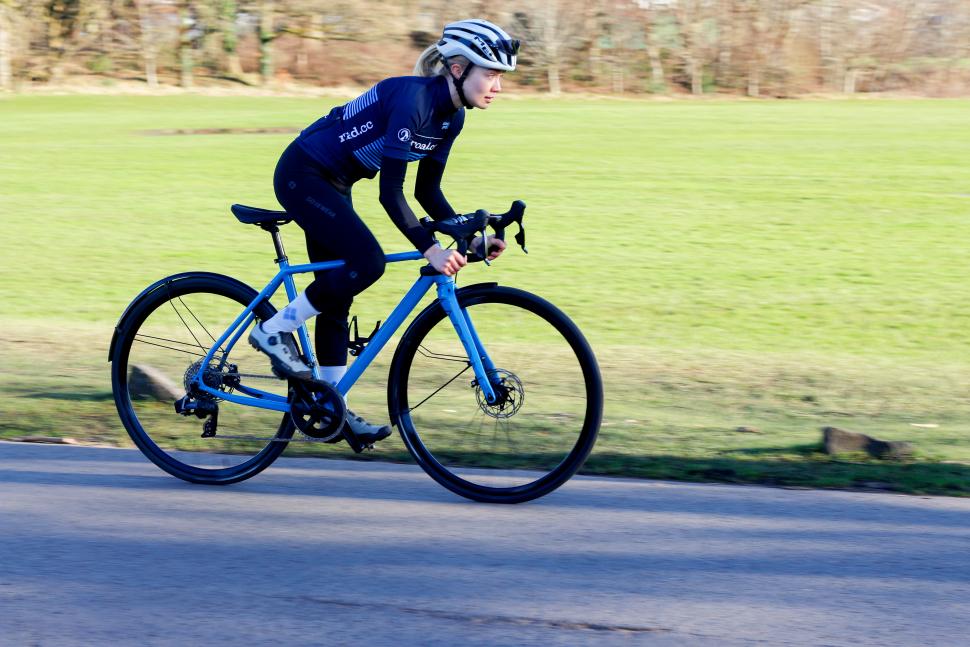
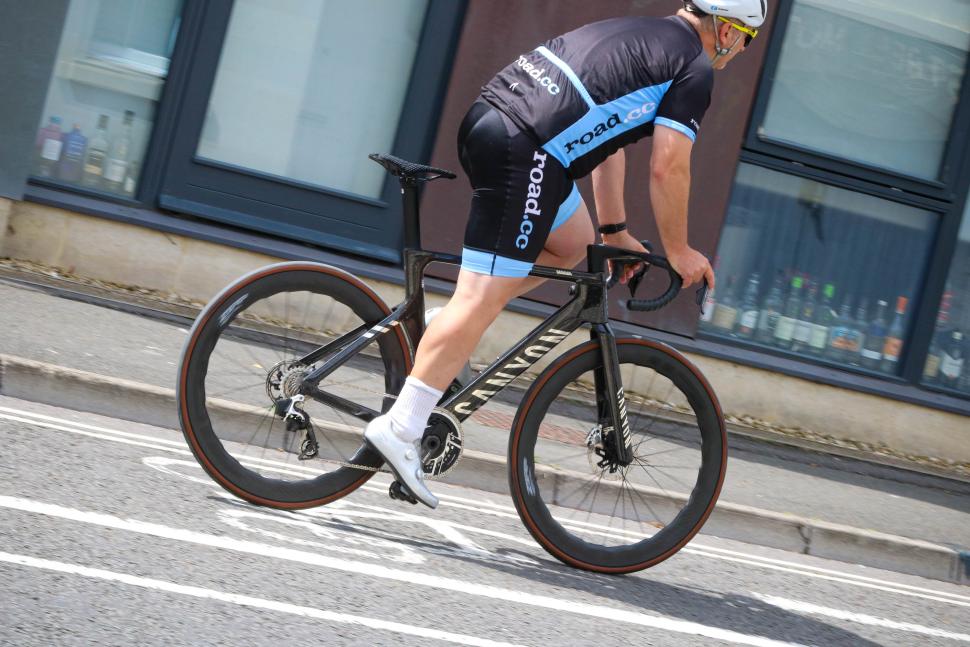
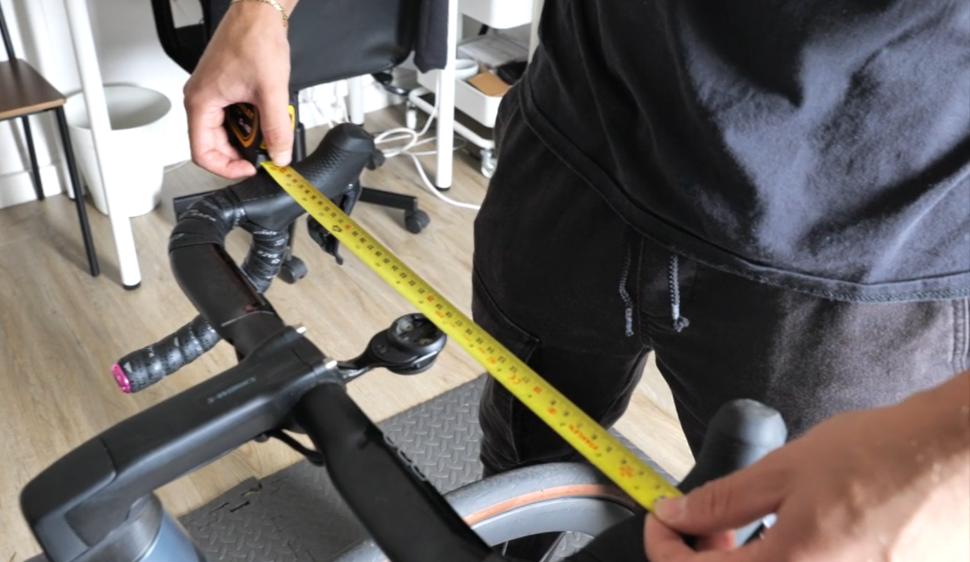



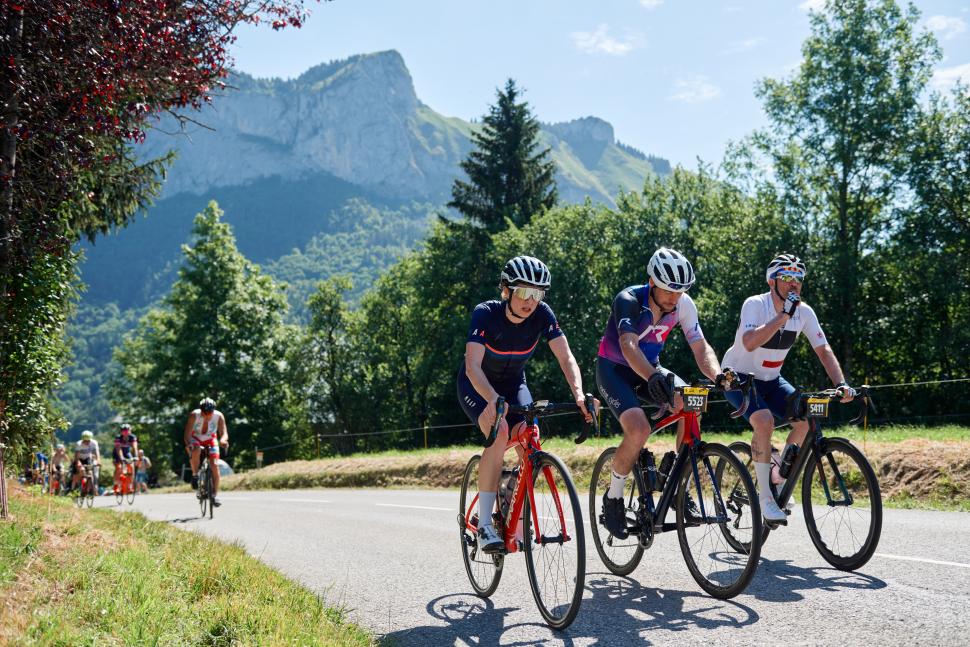

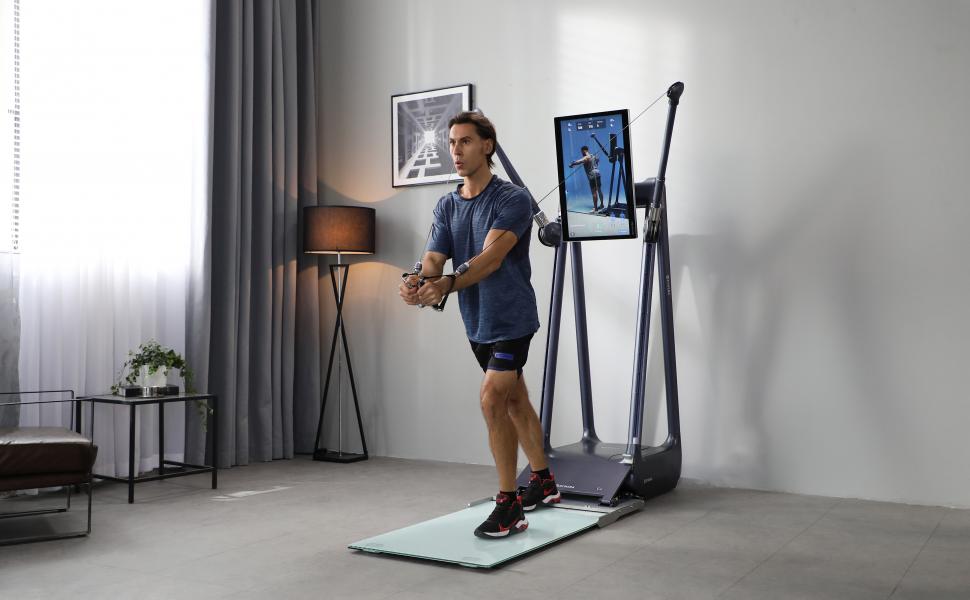
Add new comment
8 comments
Back pain today after a toughish ride on Sunday (for me recently) but tonight's ride has sorted it. Might be something to do with finishing at the pub....
Would give 2 likes if I could!
Shorter cranks = higher saddle = more back strain.
I think my back problems are a combination of being tall, riding too much and not doing enough off bike flexibility and strength work.
I know what do do but I don't, because on days when I dont ride I need to rest.
If you raise your saddle without raising your bars then you're doing it wrong, shorter cranks should be an improvement.
Just to complicate things further, rushing out and doing too much Pilates/yoga/core exercises/etc.might also cause you back pain that you then only feel on the bike, so build into that slowly and don't overdo it too.
I bought a set of resistance bands recently for £20 and honestly think they are about the best fitness investment I have made the apart from the bikes, pack up into a tiny bag and can be used to replicate virtually every machine available in the gym, I've been focusing on core strength exercises and already I can feel the difference in my climbing ability, everything just feels much more solid and as if all the power is being transferred directly to the pedals. Highly recommended.
That's a stretch. And going along with you just gets harder as you go on...
(Also +1 - thought these were rubbish plastic but keep finding more I can do with them.)
Pilates,Yoga and a professional bike fit will probably go a long way to sort out the back niggles you may have. I splashed out on one-to-one Pilates a few years ago and found the difference a daily dose did was quite profound. Yes you can watch videos for free or attend a group class but paying for personal individual teaching has, for me at least, been worth every penny invested.